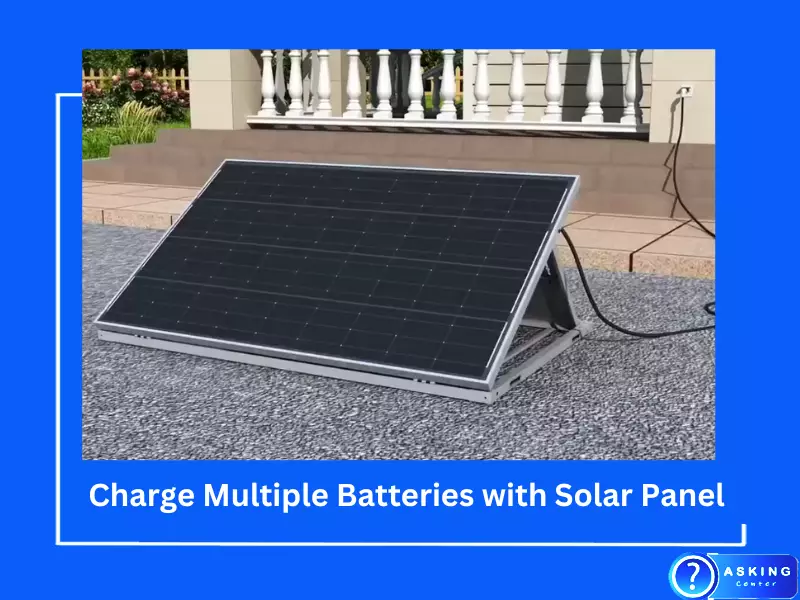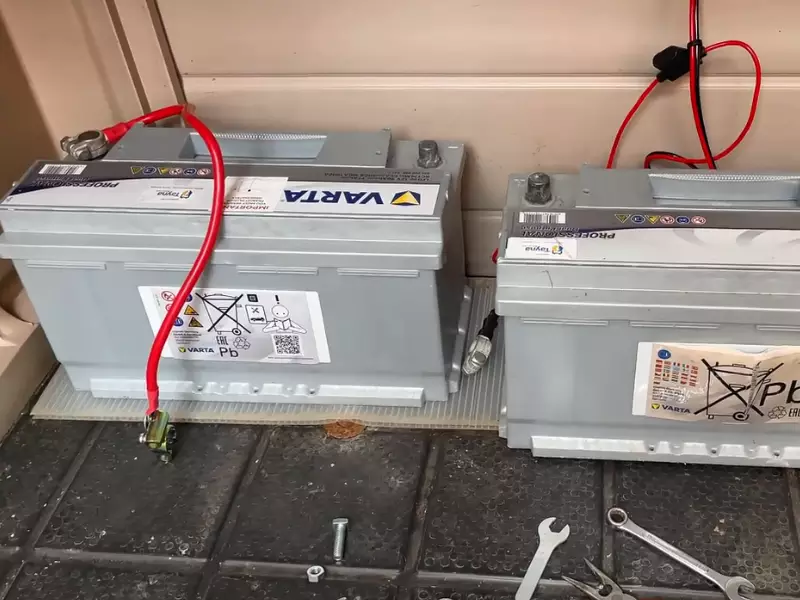Harnessing the power of the sun to generate electricity has become more common than ever before, thanks to the advancements in solar technology. This shift towards renewable energy sources not only reduces our dependence on fossil fuels but also brings about significant cost savings. Solar batteries, a crucial component of solar energy systems, store excess solar power for use when needed, thus making solar power a reliable energy source regardless of the weather or time of day.
A common query among solar energy enthusiasts and users is the possibility and methodology of charging multiple batteries with a single solar panel. This article addresses this topic in-depth, providing readers with an understanding of the basics of solar batteries and panels, the need for connecting multiple batteries to one panel, and a detailed guide on how to accomplish this. Furthermore, it explores the charging of various types of batteries, battery arrangements, expansion of solar systems, and more.
Diving into this comprehensive guide will empower you with the knowledge to optimize your solar system, ensuring maximum efficiency and return on investment. As the world gravitates towards renewable energy, understanding these aspects will pave the way for a greener and more sustainable future.
Understanding Solar Batteries and Panels
What are Solar Panels?
Solar panels are devices that convert light from the sun into usable electricity. They are made up of a collection of solar cells, which are made of semiconductive materials, usually silicon. When sunlight hits these cells, it excites the electrons, generating an electric current.

This electricity can be used immediately or stored in solar batteries for later use. Solar panels vary in types, sizes, and efficiencies, making it essential to choose the right one for your specific needs.
The Science Behind Solar Batteries
Solar batteries, on the other hand, store the energy produced by solar panels. They work by converting and storing the direct current (DC) electricity produced by the panels into a chemical form within the battery cells.
When electricity is needed, this stored chemical energy is converted back into electrical energy. Solar batteries come in various types, such as lead-acid, lithium-ion, and saltwater batteries, each with their own advantages, disadvantages, and ideal applications.
The Interplay Between Solar Panels and Batteries
Solar panels and batteries work together to create a complete solar energy system. During the day, the solar panels generate electricity which is either used immediately or stored in the solar batteries.
At night, or during periods without enough sunlight, the system draws power from the stored energy in the batteries. This synergy ensures a continuous supply of power, making solar energy a viable alternative to traditional energy sources.
Connecting Multiple Solar Batteries to a Single Solar Panel
Why Connect Multiple Batteries to One Solar Panel?
Charging multiple batteries with one solar panel provides a solution for enhancing energy storage capacity without investing in additional solar panels. This can be particularly useful in areas with limited sunlight availability or during periods of increased energy demand.
Equipment Check
To connect multiple batteries to a single solar panel, you’ll need the panel itself, the batteries, suitable wiring, a charge controller, and safety equipment such as fuses and disconnect switches. Remember, the type and size of these components depend on your specific requirements.
Charging Multiple Batteries with One Solar Panel
Choosing the Right Solar Batteries and Panel
The right combination of batteries and panel depends on factors such as your energy requirements, budget, and environmental conditions. For instance, lithium-ion batteries, known for their high efficiency, might be suitable for systems with high energy demands, while lead-acid batteries could be a more cost-effective solution for smaller setups.

Solar Panel Positioning
Solar panel positioning is key for efficient energy generation. The panel should be oriented towards the sun and installed at an angle that maximizes its exposure to sunlight throughout the day.
Detailed Connection Process
Method One: Series Connection
In a series connection, the positive terminal of one battery is connected to the negative terminal of the next. This increases the voltage while the capacity (Ah) remains the same. A series connection might be suitable for systems requiring higher voltage levels.
Method Two: Parallel Connection
In a parallel connection, all positive terminals are connected together, and all negative terminals are connected together. This setup increases the capacity while the voltage remains the same, suitable for systems requiring higher capacity.
Method Three: Series and Parallel Connection
Combining series and parallel connections allows you to increase both voltage and capacity. However, this setup is more complex and requires careful planning and execution.
Expert Tips and Safety Precactions for a Successful Connection
Ensure all connections are secure, use a suitable charge controller to prevent overcharging, and install fuses and disconnect switches for safety.
Charging Various Types of Batteries with Solar Panels
Guide to connect a solar panel to a car battery
Connecting a solar panel to a car battery requires a solar panel, charge controller, and appropriate cables and connectors. The process involves connecting the solar panel to the charge controller, which is then connected to the battery. The charge controller ensures the battery doesn’t overcharge.
Process of Charging 12V Batteries with a Solar Panel
Charging a 12V battery with a solar panel follows a similar process as above. The key is to use a solar panel with a voltage higher than 12V (usually 18V) to account for varying sunlight conditions and losses in the system.
Charging Two Separate Batteries
It is indeed possible to charge two separate batteries with one solar panel. This can be accomplished either by connecting the batteries in parallel or using a battery isolator or a dual battery charge controller.
Direct Charging
While a battery can be charged directly from a solar panel, it’s not recommended without a charge controller. The controller regulates the flow of electricity, preventing overcharging and battery damage.
Going Deeper into Battery Connections
Do Batteries in Parallel Last Longer?
When batteries are connected in parallel, the capacity (Ah) of the system increases, meaning the batteries can supply the required power for a longer period. However, the lifespan of each battery will largely depend on its individual quality, maintenance, and usage conditions.
Is It Better to Charge Batteries in Series or Parallel?
Whether it’s better to charge batteries in series or parallel depends on your specific needs. If your system requires higher voltage, you would go for a series connection. On the other hand, if your system requires higher capacity, a parallel connection would be better. Sometimes, a combination of both (series-parallel) is used to increase both voltage and capacity.

Can You Add More Batteries to Your Solar System?
Yes, adding more batteries to your solar system can increase your energy storage capacity, allowing you to store more solar power for use when the panels are not generating electricity. However, you should consider factors such as the capacity of your current system, the compatibility of new batteries, and the available space for expansion.
How Long Does It Take for a Battery to be Charged?
The charging time for a solar battery depends on the battery’s capacity, the power output of the solar panel, and the amount of sunlight the panel receives. Typically, a solar panel could take anywhere from a few hours to a full day to charge a battery fully, depending on these factors.
Maintaining Solar Panel Battery Safety
Safety Precautions to Follow
Safety is crucial when dealing with solar systems. Some safety measures to follow include:
- Using a charge controller to prevent overcharging or undercharging of batteries.
- Ensuring correct and secure wiring connections.
- Regularly checking and maintaining your system to identify and fix potential issues.
- Following the manufacturer’s guidelines on installation, operation, and maintenance.
The Importance of Regular Maintenance
Regular maintenance of your solar system can ensure its safety and longevity. This may include checking and cleaning the solar panels, inspecting the system’s wiring, and maintaining the batteries according to the manufacturer’s instructions.
Frequently Asked Questions
Can You Overcharge a Solar Battery?
Overcharging a solar battery can reduce its lifespan and efficiency. Hence, it is essential to have a charge controller in your solar system that regulates the charge going to the batteries and prevents overcharging.
How Many Batteries Can You Connect to One Solar Panel?
The number of batteries you can connect to a single solar panel depends on the panel’s wattage and the battery’s voltage and capacity. Higher wattage panels can charge more or larger capacity batteries.
How Long Do Solar Batteries Last?
The lifespan of a solar battery depends on its type, quality, usage, and maintenance. Typically, a high-quality solar battery can last between 5-15 years.
What Is the Cost of Setting up Multiple Solar Batteries with a Single Panel?
The cost varies based on the types and number of batteries, the solar panel, and additional components needed for the setup. Remember that while the initial investment might seem high, the cost savings in the long run make it a worthwhile investment.
Conclusion
Harnessing solar energy efficiently requires a sound understanding of the various components involved, particularly solar panels and batteries. Knowing how to charge multiple batteries with one solar panel can significantly enhance the efficiency and effectiveness of your solar system. The insights and guidance provided in this article should serve as a comprehensive resource for anyone looking to optimize their solar setup.
The future of energy is undoubtedly moving towards renewables like solar, and understanding these concepts will be crucial in making the transition. So, let’s harness the sun’s power to its fullest potential and contribute to a greener and more sustainable world.
